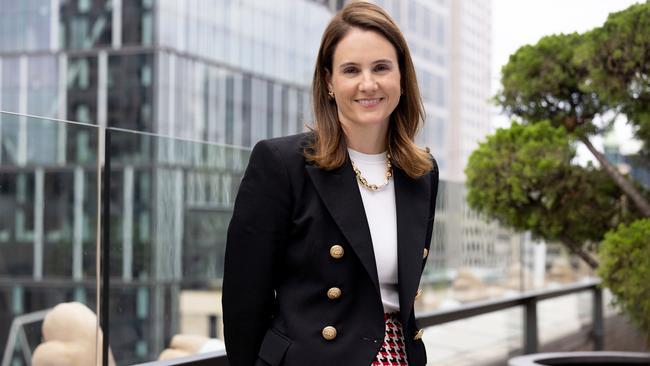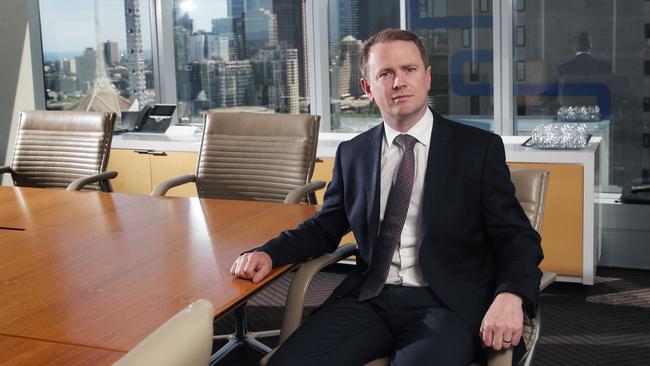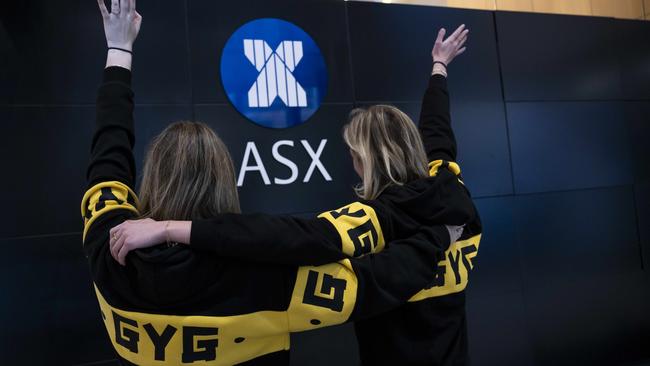Bankers pin hopes on an end to the IPO drought and are buoyed by rate cuts, market valuations
What does 2025 have in store for the domestic IPO and capital raisings market? In a roundtable discussion, three top investment bankers explain why they foresee better conditions ahead.

Investment banks hope 2025 will mark the end of a multi-year drought for initial public offerings (IPOs) in Australia, against the backdrop of expected interest rate reductions and still buoyant ASX valuations.
While total Australian IPO transactions climbed fourfold to US$2bn ($3.2bn) in 2024, from the previous year’s anaemic levels, activity overall for new listings was well down on a 10-year annual average of almost US$3.7bn. According to London Stock Exchange Group (formerly Refinitiv) data, 2024 was the busiest year for IPOs since 2021 – supported by transactions including the respective floats of Mexican food chain Guzman y Gomez and HMC Capital’s data centre owner, DigiCo Infrastructure REIT.
A string of floats in the final quarter of 2024 left the window for IPOs ajar, albeit the year’s activity was dominated by the much-hyped DigiCo transaction.
Investment bankers – who tend to be optimistic on the outlook for deals – noted a strengthening pipeline of IPO transactions and building confidence levels as 2025 was set to get underway.
The mixed performance, however, of 2024’s crop of ASX-listings has put a dampener on the outlook for floats this year and investors are expected to remain vigilant in their IPO assessments.

Fund manager Eley Griffiths Group’s executive chairman, Ben Griffiths, is keeping close tabs on market conditions here and offshore as a lead indicator for the IPO pipeline, but thinks domestic investors need to see further successful floats to gain confidence around investing in new listings.
“Nothing succeeds like success in the business of primary raisings,” he said.
“Marine services group Bhagwan … joined the boards in 2024 and wrestled with its IPO price for months. Investors remained circumspect on new primary raisings until the convincing performance of Guzman literally called the season open. The recent DigiCo Infrastructure float proved to be a cold shower for aspiring IPO stags (those seeking short-term gains).”
Guzman’s ASX debut gave the market a boost in June and the company’s shares have traded strongly in the aftermarket to close at $40.57 on Tuesday. That is well above an IPO price of $22. But other 2024 IPOs have had a turbulent start to listed life with Bhagwan trading at 63 cents on Tuesday, in line with its July listing price.
Payments firm Cuscal’s stock was changing hands at $2.26 on Tuesday, down from its $2.50 debut price, while construction and hire company Symal Group’s shares were trading at $1.70, below an $1.85 offer price.

DigiCo – last year’s biggest IPO – has also disappointed. The stock closed at $4.45 on Tuesday, down markedly from a $5 issue price.
To further delve into 2025’s IPO and equity capital markets’ (ECM) prospects, The Australian hosted a roundtable with Macquarie Capital’s ECM co-head for the Asia Pacific region Georgina Johnson, UBS’s head of ECM origination for Australasia Charlie Daish and Barrenjoey’s joint head of ECM Jabe Jerram.
There was a late flurry of IPOs in 2024 including by Cuscal and DigiCo, but it was still a very challenging year for getting floats away. How would you characterise the IPO environment through 2024?
GJ: The IPO market through the beginning of 2024 saw lower volumes with candidates delaying listing due to business performance considerations, or more broadly because of the uncertain macroeconomic outlook – and this was despite listed investors looking for new opportunities to deploy capital.
Throughout the year, and particularly post the US election, increasing clarity on the economic backdrop has really supported a pick-up in secondary and IPO activity, the best example of that being the $2bn-plus IPO of the DigiCo REIT, which was the largest IPO in five years.
CD: The environment became increasingly positive for IPOs throughout 2024, so it was not a surprise we saw a number of successful listings late in the year. Equities have reached all-time highs, valuation multiples have expanded, and inflation is reducing. Importantly investor inquiry on IPOs has increased as investors look for new opportunities to deploy capital.
JJ: Market conditions for IPOs improved significantly in the last quarter thanks to markets trading at record levels and investor risk appetite increasing materially. While these factors only produced a few listings late in the year, we expect this to be conducive to good IPO conditions in 2025.
How is your 2025 pipeline for ASX-listings shaping up?
CD: The stronger market environment and recent listings has provided vendors more confidence in pursuing an IPO, which will support the IPO pipeline. Limited supply has been a key constraint in recent years.
JJ: It feels like 2025 could be a strong year for IPOs – market conditions are positive, and investors are looking for new opportunities.
GJ: The IPO pipeline for 2025 is definitely continuing to grow and we anticipate several companies to explore listings next year in what we’re expecting to be favourable equity market conditions. The RBA (Reserve Bank) commencing monetary policy easing will be a supportive factor for the pipeline, as will a continued normalisation of cost inflation. It’s worth noting that valuations across the market have been robust with the ASX 200 currently trading on a 2.5-times premium to the last 10-year average, and that will assist in generating attractive listing valuations. Investors are also saying they’re likely to be supportive of IPOs in 2025, particularly for those that bring new or differentiated exposures to the ASX.
Are you expecting mooted Reserve Bank rate cuts to support company valuations in some sectors and buoy the IPO market?
CD: In 2024 we saw a multiple expansion across the market (the ASX 200 from circa 16 times to circa 18 times, vs. a five-year average of circa 17 times, in part driven by the shift in expectations on interest rate trajectory. Investors already expect interest rate changes – as such, rate cuts will likely be important for providing confidence on the economic outlook and health of the consumer, which has been an increasing focus.
GJ: We expect the RBA to commence easing, most likely toward the middle of next year, which will further improve investor confidence and support a continued increase in market activity, particularly in relation to IPOs and to growth sectors such as technology.
Ongoing assets allocations into ASX equities, particularly into passive strategies will also support listed market valuations, bearing in mind those valuations are currently 2.5 times higher than the last ten-year average. Around 20 per cent of capital raised and selldown activity during calendar year 2024 was data centre related, and we expect the structural growth across key megatrends such as digitisation and the energy transition to continue to drive capital markets activity going forward.
JJ: Valuations are currently good in the listed market and to some extent I think rate cuts are largely priced into share prices. Obviously, stocks (and IPOs) that are more exposed to the consumer could benefit from quicker and or larger rate cuts and this is something investors are focused on. Clearly a risk to markets is that rate cuts don’t eventuate at the rate priced in, with a good example being the (recent) response to Powell’s (Federal Reserve chair Jerome Powell’s) commentary.
The growth in private capital has taken off overseas and in Australia, including for pre-IPO capital. Private capital and private credit are playing an increased role in the economy. The RBA estimates there is $40bn in private credit outstanding in Australia, or about 2.5 per cent of business debt. Is the growth in private capital and credit delaying decisions by some private companies to join the ASX?
JJ: The growth in private capital, along with large investors’ ability to invest in private and public equities, has definitely played a role in reducing IPO activity. Ultimately the public market remains the best source of long-term liquidity and, in many cases, the best valuation. Clearly many high-quality companies now have the opportunity to raise a lot of capital in a private setting and delay IPO plans for a longer period of time than they have previously.
CD: Increasing availability of private capital has definitely influenced vendor exit options. A number of factors impact that decision to list and timing of listing – for example, performance of business, public company disclosure requirements, reporting and governance requirements.
GJ: When it comes to funding growth, companies will continue to explore all capital options available including, of course, private capital alternatives which have become increasingly accessible. The availability of private credit has delayed some listings; however, this is not necessary a bad thing – the IPO market will always be an important source of capital for companies, particularly those with succession or selldown objectives and significant ongoing growth funding requirements.
It’s important however, that companies wait to list until they are of a sufficient size and scale to justify the additional listed company costs and have adequate visibility on their forward earnings profile to effectively manage the market’s expectations.
Are Australian investors still more closely scrutinising potential IPOs by private equity firms, given a patchy performance from some buyout-led deals in the past? How are private equity firms navigating the challenge of having fewer Australian exits through public markets?
JJ: For a long time the narrative in Australia has been private equity IPOs are somehow “bad” and founder IPOs are “good”, but I think that generalisation is incorrect.
Firstly, the growth in the pools of private capital means what constitutes a private equity IPO has changed materially. Second, investors are assessing an opportunity on its merits – what’s the industry? What’s the earnings outlook? How good are management? I think who is promoting the IPO and the current ownership is just one of a large number of factors investors consider.
CD: Investors will conduct thorough due diligence on any IPO, whether a business is owned by private equity, founders or corporate vendors. Investors are focused on the fundamental attributes of any IPO opportunity which includes a view on outlook for the business and expected returns.
GJ: Equity investors will closely scrutinise new listings regardless of ownership structure. The key focus is on historical performance, any recent capital investment and returns, the multi-year growth outlook and alignment between vendors and IPO investors post listing. As with founder businesses, investors expect private equity vendors to approach the initial listing with a partnering mindset, with the IPO only the (first) step in a broader exit process.
Across the market, there are currently several high-quality companies within PE portfolios which may come to market in 2025, and assuming they are appropriately structured and priced, these listings will be very well supported next year.
Chemist Warehouse has opted to join the ASX via a backdoor listing or reverse takeover of Sigma Healthcare, is this a live option for other companies weighing an IPO?
GJ: We have a very efficient and flexible listing and secondary raising regime in Australia and the Chemist Warehouse/Sigma transaction demonstrated investors’ willingness to embrace innovative structures for attractive exposures. For most companies, we expect an IPO process to continue to be the most appropriate route to market, however there is potential for other companies to utilise this option as an alternative to a traditional IPO.
We’ve also seen an increase in offshore companies accessing the ASX through secondary listings (such as Light & Wonder and Capstone Copper) attracted by strong relative valuations on the ASX and the high-quality active investor base.

JJ: Backdoor listings have always been an option – and in some cases a very good option – but I don’t see it materially changing the IPO market. Ultimately a reverse takeover is just a merger and two companies have to agree their respective valuations – that obviously creates a large number of complexities (that are) not present in an IPO.
CD: Over a long period of time, we have seen a number of companies consider backdoor listings.
In 2024 a group of investment banks lobbed a potential reform blueprint for the IPO market with ASIC and the ASX. More broadly, how can IPO processes be streamlined to facilitate further transactions and better promote Australia as a listing destination?
JJ: Shortening the risk period for an IPO – the period between when a deal becomes public and when it starts trading – is always a good idea and we are always trying to work with the regulators to make the process as efficient as possible.
GJ: Macquarie and other advisers have been working collaboratively with ASIC and the ASX to ensure the IPO listing process and regime are fit for purpose. The starting point is the fact that Australia has a very efficient and flexible listing and secondary raising regime. Our regulators regularly assess the suitability of offshore developments and often lead the major exchanges, for example, during Covid the ASX and ASIC quickly responded to increase placement capacity limits to enable impacted corporates to quickly recapitalise their balance sheets.
CD: Market structure and execution strategies for IPOs have evolved over time. In that context, it’s appropriate to continue to assess whether the listing processes could be enhanced to support greater IPO activity.
Do you envisage a time when further large Australian-based tech companies may choose an ASX-listing as well as in markets like the US/Nasdaq?
CD: There are already a number of dual-listed companies across all sectors and we expect that the trend will continue. Life360 is a terrific example of an ASX company which successfully undertook a dual listing this year on the Nasdaq. In most situations, an IPO will be on a single exchange, with a dual-listing undertaken sometime post IPO.
GJ: For domestic technology companies, the ASX remains an attractive listing market, with companies attracting significant investor interest relative to larger offshore exchanges where they would receive more limited investor and broker attention.
The depth of offshore technology-focused exchanges, such as Nasdaq, means that companies need to be materially larger on those exchanges to be relevant to investors.
Australian investors have demonstrated their support for domestic technology companies, such as WiseTech, REA Group and CAR Group; all of which are very well held by ASX investors and trading at premium valuations relative to offshore peers.
JJ: The ASX has provided a very efficient regime for secondary and dual listings, and this has been a feature this year – Metals Acquisition Corp was one very successful example we led of a NYSE (New York Stock Exchange) listed company that moved here. I think with the amount of capital in Australia, the ASX will increasingly be seen as an attractive venue for both primary and secondary listings.
Given the strong flows of superannuation money into the ASX every year, for an IPO candidate is ASX 200 or ASX 300 index inclusion more important than ever? We saw that dynamic in the float of Guzman y Gomez after its debut.
JJ: Passive money which tracks index series is a larger and larger part of the market every year. This pool of capital is unlikely to participate in an IPO but can be a large buyer of stock in the aftermarket when index inclusion occurs, so this dynamic is something we are increasingly focused on.

GJ: When structuring an IPO, sizing free float to facilitate near-term index inclusion in either the ASX 300 or ASX 200 is critical to supporting aftermarket liquidity. A line of sight to index inclusion soon after listing is an important catalyst for the IPO demand and drives institutional ownership post listing through passive investors.
CD: Index inclusion has always been a key IPO structuring consideration because it can impact the institutional interest in an IPO and the aftermarket liquidity for a company. The increasing significance of passive ownership has meant that it is a more important factor.
Are potential IPO candidates still having to navigate a gap between their price expectations and those of large and retail investors?
GJ: The disconnect between vendor and investor pricing expectations has been a headwind to greater IPO volumes over the last few years. As equities markets have rallied over the last 18 months and investors have pivoted their portfolios to higher risk/higher growth exposures, we are starting to see the gap narrow, which is likely to support increased IPO valuations in 2025.
CD: This is always a debate for every IPO and is impacted by a number of factors including, but not limited to, the nature of the business, the size of the IPO, broader market conditions and the economic backdrop.
JJ: The best way of mitigating this dynamic is aligning the interests of existing shareholders and incoming investors at the IPO. We think the days of large secondary selldown IPOs are largely behind us and the IPO is merely step one to future selldowns. In this scenario there is increased alignment in wanting the IPO to perform well in secondary trading.
Can you comment on how mum and dad investors may participate in IPOs in 2025? Keep in mind the dearth of floats in recent years and the prudential regulator’s decision to scrap investment options such as bank hybrid securities.
JJ: I think the IPO market has increasingly become one for institutional and wholesale investors. Ultimately most issuers want quick processes and certainty which is most easily achieved by large institutional investors – this doesn’t mean retail investors are locked out – these managers are in many cases managing money for mum and dad investors.
GJ: Retail investors continue to be active in ASX raisings. The retail components of secondary raisings during 2024 have been generally well supported and the $2bn -plus DigiCo REIT IPO was, for example, very well supported by retail. We expect to continue to see this type of strong retail participation in 2025, particularly in the context of fewer bank hybrid issuances.
CD: Through a close relationship with their financial adviser and expressing an interest in looking at new opportunities.
Capital raisings to shore up balance sheets or fund mergers and acquisitions were typically well supported through 2024, will this theme continue in 2025?
CD: Strategically aligned transactions are likely to continue to attract investor support, irrespective of whether there is an equity raising component. Australia’s listing rules and disclosure regime is very flexible and supports efficient access to capital. We expect a pick-up in equity funded acquisition activity in 2025.
GJ: Capital raisings for secondaries should continue to be well supported by investors in 2025, particularly those funding on-strategy and accretive growth and M&A. After a period of elevated take private activity between 2020 and 2024, it’s also worth noting that there’s still an excess of capital looking to find a home in listed markets.
JJ: With strong share prices and large investor appetite we continue to expect follow-on activity to be well supported in 2025.


To join the conversation, please log in. Don't have an account? Register
Join the conversation, you are commenting as Logout